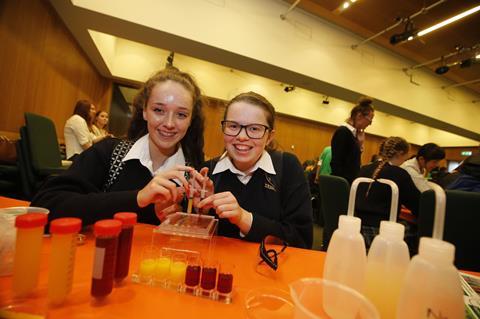We are missing a chance to engage with future generations

Science and technology are major economic drivers and key to global prosperity of countries. US President Barack Obama and the previous UK coalition government have both identified public engagement and education in science, technology, engineering, and mathematics (Stem) as top priorities.
Yet there are limited formal avenues for researchers to share their ideas and activities for outreach events. Experiments for school children and outreach activities are rarely published in either discipline-specific journals or even within education journals. For many researchers, the work involved in preparing a manuscript on an outreach activity may not be worth the distraction from their main research duties. This means that most Stem promotion and outreach by academics is through science festivals and school visits to university campuses.
But what if we took inspiration from other fields? It is common for athletes at major events to be involved in local outreach programmes, encouraging healthy lifestyles or running taster events for their sport. Could we do the same for science?
Large scientific meetings provide an ideal opportunity to promote engagement. They bring leading experts together in one location and allow cross-pollination of outreach ideas between researchers. They are a chance for the public to see scientists engaged in their work outside of the lab. Scientific endeavour is often portrayed as a particularly solitary and introverted effort; but, as every scientist knows, a successful career in research must be collaborative and social.
The recent International Conference on Miniaturised Systems for Chemistry and Life Sciences (MicroTAS) in Dublin, Ireland was an excellent example of how conferences can also engage the local public and have an impact on the community. This event saw 500 secondary school students (aged 14–15 years) attend a lecture from leading microfluidics researcher Sabeth Verpoorte form the University of Gronigen, The Netherlands, and get involved in hands-on activities with many of the visiting professors and group leaders. The students arrived just as the morning sessions were finishing, and experienced the crowd of scientists connecting, talking and discussing the latest discoveries. After the event, one of the visiting teachers wrote to the outreach organisers to thank them and highlight how the exciting buzz around the conference showed the students a very different side to science.
If we want to find new ways of engaging the public, conferences present an untapped venue. Coupling an outreach event to a conference will require extra planning and organisation, but the opportunity they provide makes it worthwhile.
Darius Rackus is a PhD candidate at the University of Toronto, Canada












No comments yet